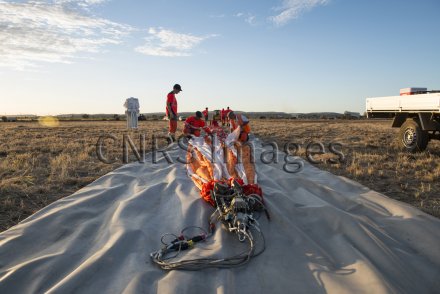Production year
2017

© Sébastien CHASTANET / CNES / OMP / IRAP / UT3 / CNRS Images
20170104_0038
Pyrotechnic separation device at the top of the flight assembly (triple-parachute top section), awaiting installation in the envelope gondola as part of the preparations for the PILOT, CLIMAT and CARMEN/CASOLBA missions, at the Alice Springs balloon launch base in Australia. The flight assembly generally consists of the gondola and its payload of scientific instruments, but also a radar transponder, parachutes to enable a controlled landing during the balloon's post-mission descent, and a small auxiliary balloon from which the gondola is suspended pending lift-off. Measurements are more economical and simpler to perform using stratospheric balloons than using satellites. Balloons are able to gather data that would be impossible to collect using ground-based telescopes, as the Earth's atmosphere partially blocks cosmic radiation.
The use of media visible on the CNRS Images Platform can be granted on request. Any reproduction or representation is forbidden without prior authorization from CNRS Images (except for resources under Creative Commons license).
No modification of an image may be made without the prior consent of CNRS Images.
No use of an image for advertising purposes or distribution to a third party may be made without the prior agreement of CNRS Images.
For more information, please consult our general conditions
2017
Our work is guided by the way scientists question the world around them and we translate their research into images to help people to understand the world better and to awaken their curiosity and wonderment.